 |
 |
 |
| |
PREVALENCE OF NONALCOHOLIC FATTY LIVER
DISEASE VERTICALLY HIV-INFECTED YOUTHS
|
| |
| |
The prevalence of NAFLD by non-invasive imaging techniques was 28.9% in PHIV
liver ultrasound assessment should be considered for the screening of NAFLD among PHIV in routine clinical practice
CROI 2022
Itziar Carrasco1, Maria Luisa Navarro1, Sonia Alcolea2, Antonio Olveira2, Angel
Lancharro1, Maria Luisa Montes2, Cristina Diez1, Luis Escosa2, Maria Jose Mellado2, Carmen Busca Arenzana2, Talia Sainz2
1Hospital General Universitario Gregorio Maranón, Madrid, Spain, 2Hospital La Paz
Institute for Health Research, Madrid, Spain
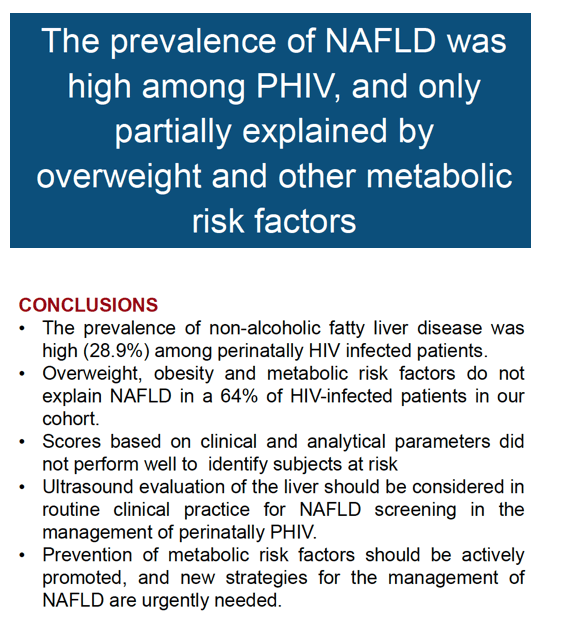
program abstract
Background:
The prevalence of subclinical liver abnormalities is high among people living with HIV, but data regarding perinatally HIV-infected children and adolescents (PHIV) are scarce. Non-invasive image techniques offer an opportunity to address non-alcoholic fatty liver disease (NAFLD) in a population in which the scores validated for adults have not been tested.
Methods:
Prospective transversal study including PHIV under follow-up at the Spanish National Cohort of HIV-infected children and adolescents (CoRISpe) and HIV-exposed uninfected siblings as controls. Non-invasive imaging techniques for the diagnosis of NAFLD and/or fibrosis were performed, including Shear Wave Elastography, Fibroscan and Controlled Attenuation Parameter (CAP). Anthropometric measurements and biochemistry including lipid profile were performed, and four scores to predict NAFLD/fibrosis were calculated and their accuracy evaluated.
Results:
Seventy-six participants (59.2% women) with a median age of 19 years [IQR: 15.5 - 25.6] were included, 38 were PHIV and 38 age and sex-matched controls. All HIV participants were on ART, their immunological situation was good and 86.8% were virologically suppressed. The prevalence of NAFLD by non-invasive imaging techniques was 28.9% in PHIV vs. 7.9% among non-HIV infected controls (p=0.02). The performance of scores based on clinical and analytical parameters was very poor. Participants with NAFLD had a significantly higher BMI, but only 27.3% presented overweight. Differences in HIV-related parameters between the groups were non-significant, except for the CD4/CD8+ T-cells ratio, decreased among PHIV diagnosed with NAFLD (p=0.04).
Conclusion:
The prevalence of NAFLD was high (28.9%) among PHIV, and only partially explained by overweight and metabolic syndrome defining factors. The scores based on clinical and analytical parameters did not accurately identify subjects at risk. Therefore, liver ultrasound assessment should be considered for the screening of NAFLD among PHIV in routine clinical practice.
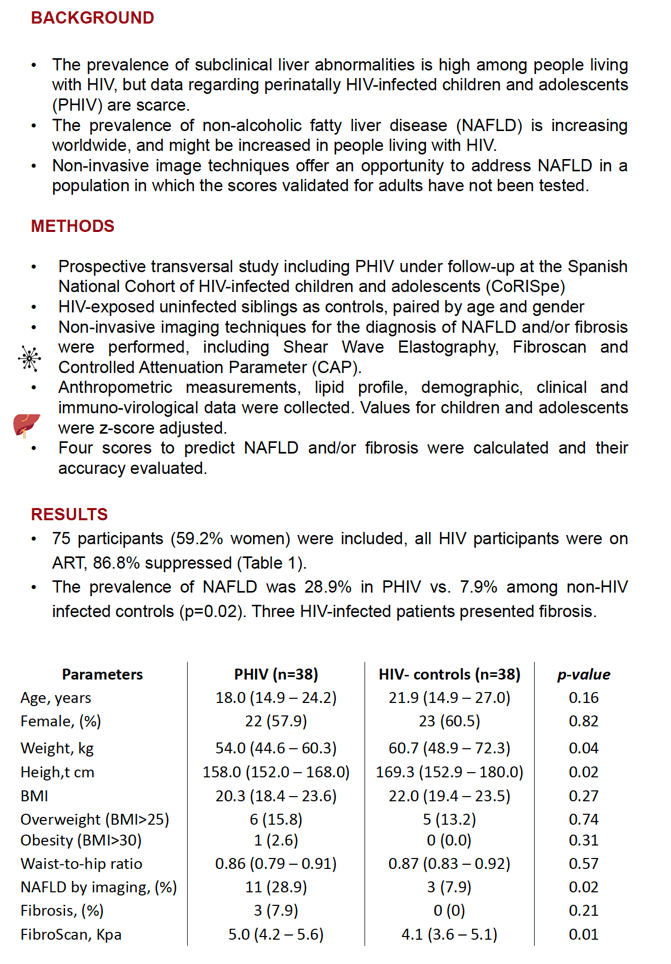
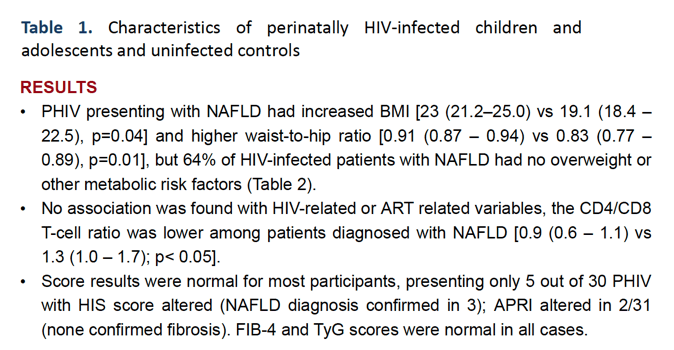
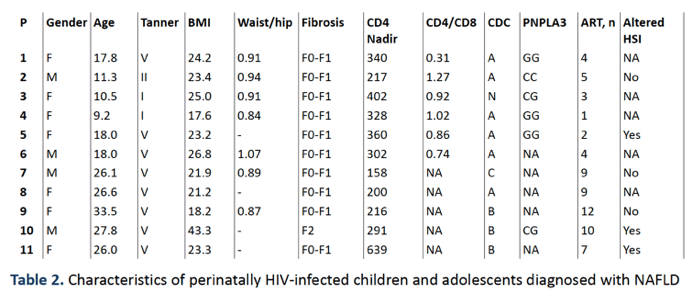
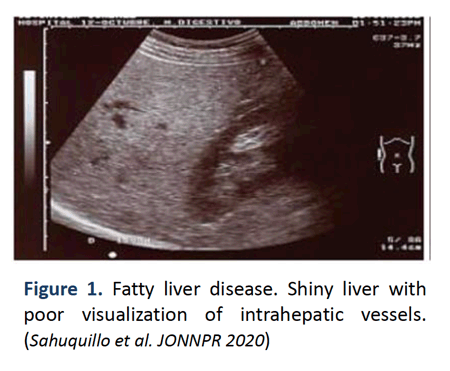
|
| |
|
 |
 |
|
|